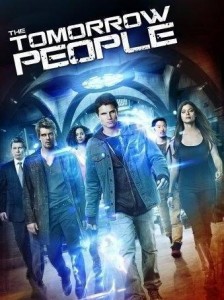Informed consent is a legal agreement between a health care provider and a patient, in which patients are supposedly given an active role in decision-making processes regarding their course of medical treatment. One element of this doctrine is that patients make their decisions voluntarily, without coercion. What many patients don’t realize, however, is that they are often left in the dark when given information about their course of treatment.
Is true informed consent an oxymoron? If patients were really informed about all the risks of a medication or procedure, how many would consent? Take, for example, this ad for Seroquel XR, an antidepressant. Two thirds of the commercial details side effects. Do patients really pay attention to all of this information?
In Barriers to Informed Consent, Lidz et al. describe the reasons why patients want to be informed of some aspects of their medical situation. Some patients assume that their physicians will do what is best for them and just seek information so they can understand their role in treatment. Others wish to be informed to feel connected to the process or to veto a specific aspect of a physician’s recommendation. There are also some patients who want to play an active role in their treatment process and request information in order to participate in decision-making. These patients are the most discerning health care consumers. Lidz et al. also examine physicians’ attitudes regarding informed consent. Physicians’ knowledge, expertise, research, experience, and the opinions of colleagues go into the medical decision making process. When a physician makes a decision regarding another person’s health, it is assumed that they made the best possible decision for this individual. Therefore, when patients don’t consent to their decisions, they often view this lack of consent as a sacrifice to the patient’s health.
What is not explicitly stated is how physician’s values and religious and political beliefs come into play when discussing informed consent. As mentioned earlier, one facet of the informed consent doctrine requires patients to make their own, independent decisions. However, it is nearly impossible for physicians to give patients a totally unbiased perspective when presenting their options for treatment. Some procedures are extremely controversial, in which case physicians may have strong grounds to dissuade a patient from choosing a specific course of action. Abortion and male circumcision are examples of procedures in which informed consent could become a problem. A physician who is firmly against these procedures is likely to emphasize the health risks and potential for complications. The way that information is expressed to a patient prior to treatment has a significant impact on their decisions. As mentioned earlier, there are varying degrees to which patients want to be involved in their medical situation. When patients are not thoroughly invested, wanting information merely to veto or as a courtesy, they are more likely to be swayed by the physician’s beliefs. Therefore, the informed consent doctrine fails to prevent physician bias from clouding patient’s decision-making ability.
Physician bias also comes into play when physicians favor certain drugs and medical devices due to gifts or other benefits they receive from companies. In an effort to prevent drug companies from wrongly influencing the minds of physicians, the Sunshine Act was recently passed. This act mandates manufacturers of drugs and medical devices in national health care programs to report both monetary and non-monetary items of value that are given to physicians. This information is then posted on a publicly accessible website.
While efforts like the Sunshine Act may help shed light on some factors that influence physicians’ attitudes, the inherent bias due to more personal, fixed beliefs still remains. While certainly useful, the informed consent doctrine fails to take into account the complexities associated with medical decision-making, disregarding the human quality expressed in both physician and patient attitudes that complicate the process.
Works Cited
Charles W. Lidz, Ph.D., Alan Meisel, J.D., Marian Osterweis, Ph.D., Janice L. Holden, R.N., John H. Marx, Ph.D. and Mark R. Munetz, M.D. “Barriers to Informed Consent.” Arguing About Bioethics. Ed. Stephen Holland. London: Routledge, 2012. 93-104. Print.
American Medical Association. “Toolkit for Physician Financial Transparency Reports (Sunshine Act). “ ama-assn.org. Web. 9 Feb. 2014. <http://www.ama-assn.org/ama/pub/advocacy/topics/sunshine-act-and-physician-financial-transparency-reports.page>






